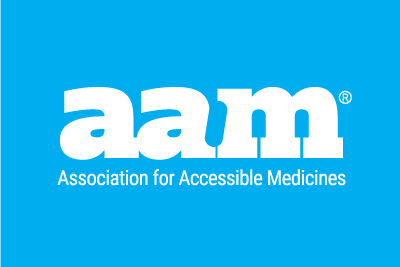Rebate Penalties Threaten Seniors’ Access to Generics
The high out-of-pocket costs for prescription drugs are top of mind for many Americans, particularly seniors in Medicare Part D. While there are meaningful bipartisan ideas to reduce patient liability for drug spending under the benefit, one policy under consideration, the application of inflation-based rebate penalties to generics, is misguided and would limit patients’ access to low-cost medicines.
AAM is doing our best to educate Congress about the impact and need to exempt generics for the sake of patients.
The proposal is based on a policy designed for the brand drug market. Under the policy, drugs face a penalty when a product’s average price rises faster than inflation (less than 2% in recent years). But while FDA-approved generics function the same way as innovative drugs for patient health, their market functions very differently, and any policies should be tailored to the market.
Generic medicines consistently drive down costs for seniors
Generics are indisputably not the cause of higher patient spending in Medicare. This is the consensus view of government and independent observers. A 2016 GAO report concluded generic drug prices declined overall, despite a few outliers, among over a thousand available products. The Medicare Payment Advisory Committee (MedPAC), in their most recent report to Congress, highlighted where generic drug prices in Medicare Part D have declined by an average of 13.7% from 2006 to 2018, with a decline of 11% in 2018 to 2019 alone. Most recently, Barclays noted the generic year-over-year price deflation reached 7.4 percent in the third quarter of 2021, which is greater than that seen in the first two quarters of 2021.
In contrast, a recent GoodRx review of list price increases found that in January 2021, 832 drugs increased in prices, and all but 10 were brand drugs.
Policy should reflect the important differences between the brand and generic drug markets
As such, this policy may be appropriate for brand drugs since they have control over their pricing and consistent demand patterns. But generics have neither. By design, inexpensive products are particularly sensitive to the triggers for an inflation-based penalty. For instance, a change of one penny in the average price of a generic costing 20 cents per pill would likely trigger the penalty.
And unlike brand drugs, generics compete based on lower list prices and can experience volatile swings in their average price even when they do not take a price increase. This can occur when a generic keeps its prices unchanged but experiences changes in the quantity purchased as other manufacturers compete for business. The result is that a generic may keep its price level but see its average price increase because of changes in customer purchasing patterns. The January 2016 Issue Brief released by HHS’s ASPE highlights the fact that focusing on average manufacturer price (AMP) may not be appropriate for generics, noting that in 2014 only 14% of generics had acquisition cost increases of more than 20% even though 35% of generic AMPs had increases greater than inflation.
Increased costs contribute to and extend duration of shortages
This is not merely hypothetical. Generics are already struggling with the impact of this policy as applied in the Medicaid market. A survey of AAM members determined that 40 to 100 percent of total penalties assessed were attributable to changes in customer base, meaning that the majority of instances where companies incurred the Medicaid inflation penalty were not associated with a true increase in the drug’s list price.
Moreover, half of the respondents indicated the penalty was applied to products that were recently or currently on the FDA shortage list.
The policy, which applies to generic drugs sold in Medicare Part D and the commercial market, creates an additional barrier to a sustainable market for vulnerable products. It undermines the ability of low-cost generics to stay on the market and can serve as a barrier to reentering a market – even to prevent a drug shortage.
As Congress examines solutions to address rising out-of-pocket drug costs, AAM encourages policymakers to consider the differences between brand and generics. Misguided policies such as inflation-based rebates have the potential to exacerbate existing shortages, limit access to life-saving treatments and further jeopardize the sustainability of the generics market and its role in holding down drug costs for America’s seniors.
Share Your Voice
Tell Congress to protect access to your safe, affordable generic and biosimilar medicines.
By Craig Burton, AAM Vice President, Policy
Published on November 15, 2021




